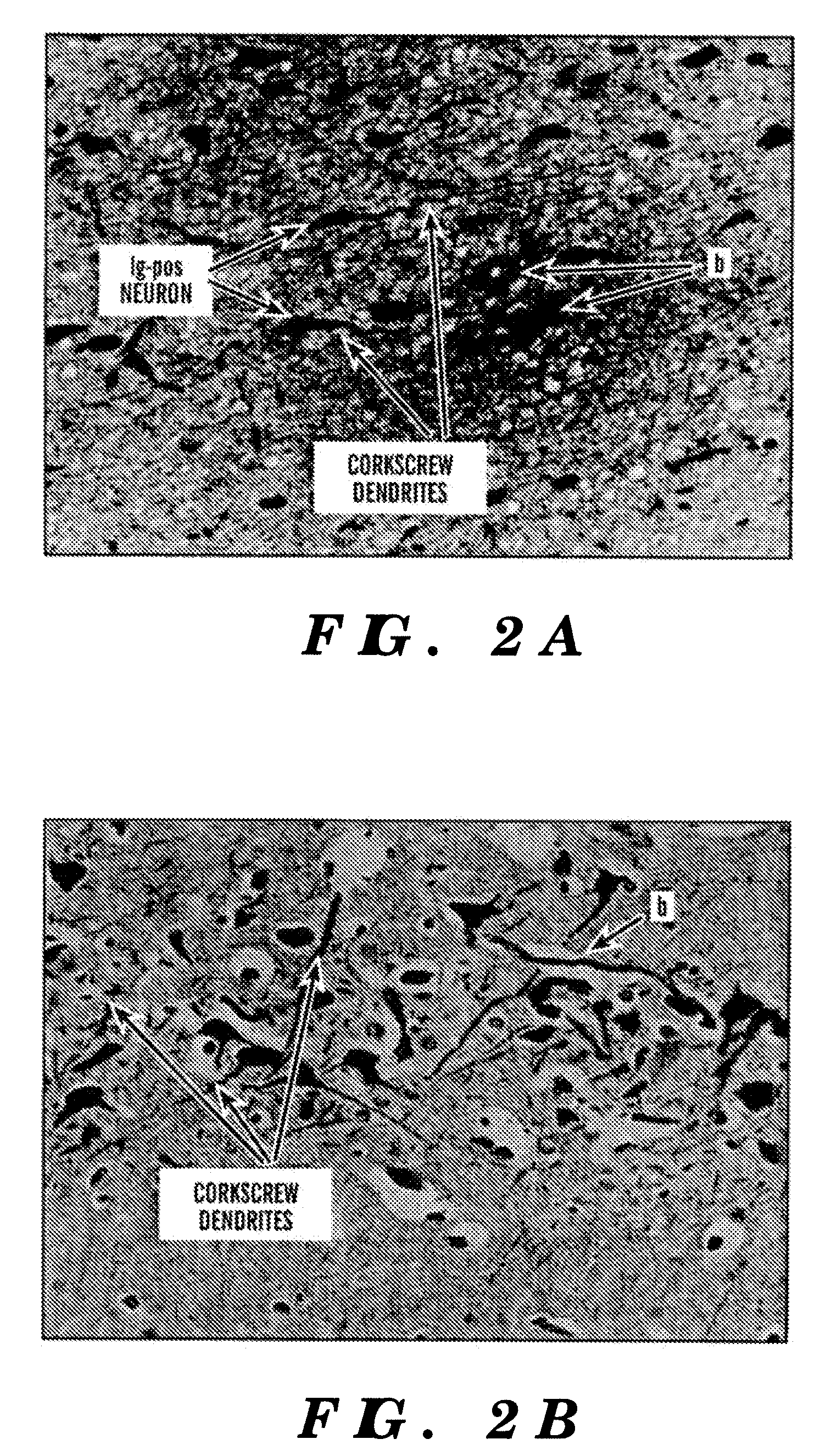Methods of treatment and prevention of neurodegenerative diseases and disorders
a neurodegenerative disease and neurodegeneration technology, applied in the field of treatment and/or prevention of neurodegenerative diseases and disorders, can solve the problems of destructive neurological diseases, limited efficacy and serious side effects of available pharmacological agents, and the inability to effectively manage numerous neurological disorders, so as to reduce or stop a symptom of vascular dementia, inhibit the expression and/or activity of lp-pla2, and reduce the effect of beta amyloid
- Summary
- Abstract
- Description
- Claims
- Application Information
AI Technical Summary
Benefits of technology
Problems solved by technology
Method used
Image
Examples
example 1
Inhibition of Lp-PLA2 Activity Prevents Vascular Dementia & Alzheimer's Disease: DM / HC Induced Intracerebral Hemorrhage and Blood Brain Barrier (BBB) Compromise
[0706]The primary function of the BBB is to maintain precise control over substances that enter or leave the brain so that the environment in which neurons function remains homeostatic. If the BBB is compromised, blood components that are normally excluded could enter the brain tissue, interfere with neuron function, trigger an immune response and elicit neuroinflammation, all of which contribute to vascular dementia and the development of Alzheimer's disease. As shown in FIG. 1, in contrast to the control vessel (Left), hemorrhage (Top Right, H&E 200×) and BBB leakage (Bottom Right, 1HC for pig immunoglobulin 100×) were noted in DM / HC brain. The black arrows indicate inflammatory cells outside the blood vessel (Top) and perivascular leak clouds (Bottom Right, BV: blood vessel). Additionally, there is increased adhesion of in...
example 2
DM / HC Animals Demonstrated Early Stage Alzheimer's Disease Pathology
[0708]Activation of astrocytes and intracellular accumulation of Aβ42 within neurons have been recognized as early and key events in the pathogenesis of Alzheimer's disease (AD) and have been well documented in the brains of AD patients. As shown in FIG. 3, as short as 7 months after exposure to CV risk factors, DM / HC induced activation of astrocytes, as indicated by elevated expression of glial fibrillary acidic protein (GFAP). Astrocytes exhibiting intense GFAP immunostaining ware seen in the immediate vicinity of neurons showing abnormal morphology. Furthermore, neurons and vascular smooth muscle cells (SMCs) demonstrated an increased immune reactivity with antibodies against Aβ42 (FIG. 4). Of note, astrocytes showed negative immune reactivity against Aβ42, demonstrating Aβ42 accumulation occurs relatively selectively in neurons and vascular SMCs. These findings demonstrate that neurons and vascular SMCs are the ...
example 3
Inhibition of Lp-PLA2 Activity Diminished DM / HC-induced BBB Leakage
[0709]As shown in FIG. 5, DM / HC induced widespread BBB leakage in all 6 animals, whereas animals treated with Lp-PLA2 inhibitor showed negligible BBB leakage. Brown stain indicates blood components (in this case Ig) have leaked out from small arteries into the surrounding brain tissue and extensive Ig binding to neurons. By contrast, in treated animals, there is no Ig leakage from blood vessels, no Ig binding to neurons, and no dendrite collapse (FIG. 5&FIG. 6).
PUM
| Property | Measurement | Unit |
|---|---|---|
| pH | aaaaa | aaaaa |
| pH | aaaaa | aaaaa |
| pH | aaaaa | aaaaa |
Abstract
Description
Claims
Application Information
 Login to View More
Login to View More - R&D
- Intellectual Property
- Life Sciences
- Materials
- Tech Scout
- Unparalleled Data Quality
- Higher Quality Content
- 60% Fewer Hallucinations
Browse by: Latest US Patents, China's latest patents, Technical Efficacy Thesaurus, Application Domain, Technology Topic, Popular Technical Reports.
© 2025 PatSnap. All rights reserved.Legal|Privacy policy|Modern Slavery Act Transparency Statement|Sitemap|About US| Contact US: help@patsnap.com



